THCA Strain Families: Indica vs Sativa vs Hybrid Flavor Profiles
The world of cannabis has long been organized around a traditional classification system that divides strains into three primary categories: indica, sativa, and hybrid. While modern genetics research has revealed the limitations of this simplified framework, these categories continue to provide valuable insights into indica vs sativa flavors and the distinct sensory experiences each family offers.
When exploring cannabis strain flavors, understanding the fundamental differences between these classifications helps consumers make informed decisions about their THCA products. Each family brings unique terpene profiles, aromatic compounds, and flavor characteristics that have been shaped by thousands of years of geographic adaptation and selective breeding.
The traditional system, while not scientifically precise, offers a practical framework for understanding THCA strain types and their associated flavor patterns. Modern cannabis consumers benefit from this knowledge when selecting strains that align with their taste preferences and desired experiences.
Today's hybrid cannabis flavors represent the pinnacle of cannabis breeding innovation, combining the best characteristics from both indica and sativa lineages to create complex, nuanced flavor profiles that satisfy sophisticated palates. These modern varieties demonstrate how traditional classifications serve as building blocks for contemporary cannabis cultivation.
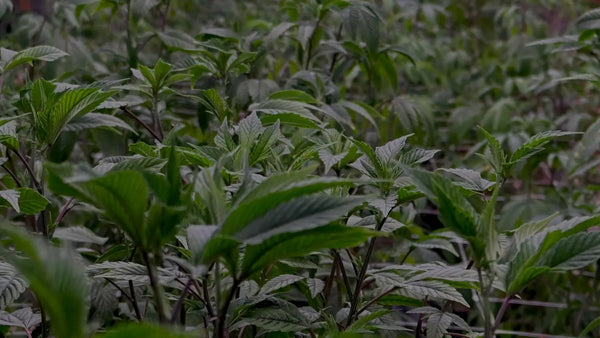
Traditional Strain Classifications
Historical Indica vs Sativa Distinctions
The historical distinction between indica and sativa strains originated from botanical observations made in the 18th century. Cannabis indica was first identified in the mountainous regions of Afghanistan, Pakistan, and northern India, while Cannabis sativa was documented in equatorial regions including Colombia, Mexico, Thailand, and parts of Africa.
These geographic origins significantly influenced indica strain taste development. Indica varieties evolved in harsh, mountainous climates with short growing seasons, developing robust, resinous flowers with concentrated terpene profiles. The challenging environment led to plants that produced dense, sticky buds with complex, earthy aromatics designed to protect against environmental stressors.
Conversely, sativa strain taste characteristics developed in tropical and subtropical regions with longer growing seasons and abundant sunlight. These plants evolved to be tall and lean, with airy flower structures and bright, energetic terpene profiles featuring citrus, pine, and tropical fruit notes.
Geographic Origins and Flavor Development
The concept of terroir, borrowed from wine production, plays a crucial role in understanding cannabis strain profiles. Environmental factors including soil composition, climate patterns, elevation, and seasonal variations all contribute to the development of distinct flavor characteristics within different strain families.
Indica varieties from the Hindu Kush mountain range developed rich, hash-like flavors with deep earth tones, while those from the valleys of Afghanistan and Pakistan exhibited sweeter, more floral characteristics. These strain flavor differences reflect the plants' adaptation to specific microclimates and growing conditions over centuries.
Sativa landraces show equally dramatic regional variations. Colombian varieties tend toward bright citrus and coffee notes, Mexican sativas often display sweet, fruity characteristics, and Southeast Asian varieties frequently exhibit spicy, incense-like aromatics that reflect their tropical origins.
Modern Genetic Complexity
Contemporary understanding of cannabis genetics flavor development reveals that the traditional indica/sativa classification system oversimplifies the complex genetic relationships between different cannabis varieties. Modern genetic testing has shown that most contemporary strains contain genetic material from both indica and sativa lineages, regardless of their phenotypic expression.
This genetic complexity means that flavor prediction based solely on traditional classifications has limited accuracy. However, the classifications remain useful for understanding general tendencies and patterns in terpene expression and flavor development.
Indica Strain Flavor Characteristics
Typical Flavor Profiles
Landrace strain flavors from the indica family typically present earth-forward profiles characterized by deep, musky aromatics with sweet undertones. These strains often exhibit what cultivators describe as "old-world" character—complex, mature flavors that speak to their ancient genetic heritage.
The most common flavor descriptors for indica varieties include rich earth, sweet hash, pine forest, dark berries, and warm spices. These flavors tend to be more mellow and rounded compared to the bright, sharp notes often found in sativa varieties, creating a sensory experience that many describe as comforting and grounding.
Many indica strains also display what's known as "Afghan funk"—a distinctive musky, almost cheese-like aroma that's highly prized among connoisseurs. This characteristic comes from specific terpene combinations that developed in the mountainous regions of Central Asia.
Common Terpene Patterns
Indica-dominant strains typically feature myrcene as their primary terpene, often comprising 30-60% of the total terpene profile. Myrcene contributes earthy, musky notes with hints of tropical fruit, and is often associated with the sedating effects traditionally attributed to indica varieties.
Secondary terpenes commonly found in indica strains include caryophyllene (spicy, peppery notes), linalool (floral, lavender aromatics), and limonene (citrus brightness that balances the earthier tones). This terpene combination creates the complex, layered flavor experience characteristic of quality indica varieties.
Classic Indica Flavor Examples
Afghan Kush represents the quintessential indica flavor profile with its heavy earth and hash characteristics. This strain delivers deep, almost mineral-like earth notes combined with the sweet, resinous quality that made Afghan genetics famous worldwide. The flavor builds on the palate, starting with subtle sweetness before developing into rich, complex earth tones.
Northern Lights offers a more balanced indica experience with sweet and spicy characteristics. This legendary strain combines honey-like sweetness with warm baking spices, creating a comforting flavor profile that has made it a favorite among both medical and recreational consumers for decades.
Granddaddy Purple showcases the fruity side of indica genetics with its pronounced grape and berry notes. This strain demonstrates how indica varieties can express bright fruit flavors while maintaining the underlying earthiness characteristic of the family.
Growing Conditions and Flavor Development
Indica varieties generally prefer slightly cooler growing conditions that mimic their mountainous origins. These strains often develop their best flavor profiles when grown with moderate stress techniques that encourage terpene production without overwhelming the plant's natural resilience.
Harvest timing plays a crucial role in indica flavor development. These strains often benefit from slightly longer flowering periods than indicated by breeder recommendations, allowing complex terpene profiles to fully develop and mature.

Sativa Strain Flavor Characteristics
Typical Flavor Profiles
Hybrid strain characteristics often incorporate the bright, energetic flavor profiles characteristic of sativa genetics. Pure sativa varieties typically present citrus-forward aromatics with tropical fruit notes, creating sensory experiences that many describe as uplifting and invigorating.
Common sativa flavor descriptors include bright lemon, sweet orange, tropical mango, fresh pine, and green herbs. These flavors tend to be more immediate and sharp compared to indica varieties, creating distinct sensory impressions that translate to the consumer experience.
Many equatorial sativas also display unique spice characteristics reflecting their tropical origins. These can include notes of black pepper, cardamom, and exotic incense that create complex, sophisticated flavor profiles.
Common Terpene Patterns
Sativa-dominant strains often feature limonene and pinene as primary terpenes, creating the bright citrus and pine characteristics associated with this family. Limonene provides lemon and orange notes while contributing to the uplifting effects traditionally associated with sativa varieties.
Pinene adds fresh forest aromatics and can appear in both alpha and beta forms, each contributing slightly different aromatic qualities. Alpha-pinene provides sharp pine notes, while beta-pinene offers more subtle, woody characteristics.
Additional terpenes commonly found in sativa varieties include terpinolene (fresh, herbal notes), ocimene (sweet, tropical aromatics), and humulene (earthy, hoppy characteristics that add complexity to citrus-forward profiles).
Classic Sativa Flavor Examples
Jack Herer exemplifies sativa flavor complexity with its pine and citrus combination. This strain delivers sharp pine notes on the front end, followed by bright citrus characteristics that create a clean, energetic flavor experience. The complexity comes from the interaction between multiple terpenes that create layered aromatics.
Sour Diesel represents the extreme end of sativa flavor profiles with its distinctive fuel and lemon characteristics. This strain's unique aromatics come from rare terpene combinations that create an almost industrial quality balanced by bright citrus notes.
Green Crack showcases tropical sativa flavors with its mango and tropical fruit characteristics. This strain demonstrates how equatorial genetics can express exotic fruit flavors that transport consumers to tropical climates.
Climate and Growing Impacts
Sativa varieties generally prefer warmer growing conditions with longer photoperiods that mimic their equatorial origins. These strains often develop their best flavor profiles when grown with abundant light and consistent temperatures.
Indoor cultivation of sativa varieties requires careful attention to environmental controls, as these plants can be sensitive to stress that affects terpene production. Outdoor cultivation in appropriate climates often produces superior flavor development due to natural light spectrums and environmental variation.
Hybrid Strain Flavor Complexity
Combining Characteristics
Modern cannabis breeding flavors represent sophisticated attempts to combine the best characteristics from both indica and sativa lineages. Successful hybrid varieties demonstrate how careful genetic selection can create entirely new flavor profiles that exceed their parent varieties in complexity and appeal.
Hybrid development involves understanding how different terpene profiles interact and combine. Some terpenes enhance each other through synergistic effects, while others can mask or overwhelm more subtle aromatics. Master breeders understand these relationships and select parents that will produce offspring with balanced, complex flavor profiles.
The most successful hybrid varieties often display what's known as "hybrid vigor"—enhanced characteristics that exceed those found in either parent variety. This can result in more intense flavors, broader terpene profiles, and unique aromatic combinations not found in pure indica or sativa varieties.
Popular Hybrid Flavor Examples
Blue Dream represents the pinnacle of hybrid flavor development with its berry and vanilla characteristics. This strain successfully combines the fruit-forward qualities of its Blueberry indica parent with the bright, energetic notes from its Haze sativa lineage, creating a complex yet accessible flavor profile.
Girl Scout Cookies showcases how hybrid development can create entirely new flavor categories. This strain's mint and earthiness combination was revolutionary when it first appeared, demonstrating how creative breeding can produce unexpected yet appealing flavor profiles.
Wedding Cake illustrates the dessert trend in modern cannabis flavors with its vanilla and pepper characteristics. This strain combines sweet, bakery-like notes with subtle spice, creating a sophisticated flavor profile that appeals to both recreational and medical consumers.
Gelato represents the cream and dessert category that has become increasingly popular in recent years. This strain's dessert and cream notes demonstrate how hybrid development can target specific flavor preferences while maintaining potency and effect quality.
Phenotype Variation and Stability
Hybrid varieties often display significant phenotype variation, meaning individual plants from the same seed batch can express markedly different flavor profiles. This variation reflects the complex genetic combinations present in hybrid varieties and requires careful selection to maintain flavor consistency.
Successful commercial hybrid varieties require extensive phenotype hunting and selection to identify individuals that consistently express desired flavor characteristics. This process can take multiple generations and involves careful evaluation of both aromatic qualities and genetic stability.
Clone-only varieties represent the ultimate in flavor consistency, as they eliminate genetic variation entirely. Many of the most famous hybrid varieties exist only as clones, ensuring that consumers receive consistent flavor experiences across different cultivation sources.

Terpene Profile Differences by Type
Indica-Dominant Patterns
Indica-dominant varieties typically feature terpene profiles characterized by higher concentrations of myrcene, caryophyllene, and linalool. These terpenes contribute to the earthy, spicy, and floral characteristics associated with indica families while also potentially contributing to the relaxing effects traditionally attributed to these varieties.
The interaction between these terpenes creates what's known as the "entourage effect," where different compounds work together to create complex aromatics and potentially enhanced effects. Understanding these relationships helps consumers select varieties that align with their flavor preferences and desired experiences.
Sativa-Dominant Patterns
Sativa-dominant varieties often feature higher concentrations of limonene, pinene, and terpinolene. These terpenes contribute to the bright, citrusy, and energetic characteristics associated with sativa families while potentially contributing to the uplifting effects traditionally attributed to these varieties.
The balance between different citrus and pine terpenes creates the wide variety of expressions found within sativa-dominant varieties. Some lean heavily toward citrus characteristics, while others emphasize pine and forest notes.
Environmental Influences on Terpene Expression
Environmental factors significantly influence terpene expression regardless of genetic potential. Temperature, humidity, light spectrum, nutrient availability, and stress levels all affect how plants express their genetic terpene potential.
Understanding these relationships helps cultivators optimize growing conditions for maximum flavor expression while helping consumers understand why the same variety might taste different when grown under different conditions.
Geographic and Climate Influences
Landrace Development
Landrace varieties represent thousands of years of natural selection and adaptation to specific geographic regions. These varieties developed unique flavor profiles that reflect their environmental origins and provide the genetic foundation for modern cannabis breeding programs.
The preservation of landrace genetics has become increasingly important as the cannabis industry has consolidated around popular commercial varieties. These ancient genetics contain unique terpene combinations and flavor characteristics that aren't found in modern hybrids.
Modern Cultivation Considerations
Contemporary cultivation techniques allow growers to control environmental variables that significantly impact flavor development. Indoor cultivation provides precise control over temperature, humidity, and lighting, while outdoor cultivation in appropriate climates can produce superior terpene development through natural environmental variation.
The choice between indoor and outdoor cultivation significantly impacts flavor development, with each approach offering distinct advantages depending on the specific variety and desired flavor characteristics.
Modern Genetic Understanding
Limitations of Traditional Classifications
Modern genetic research has revealed that the traditional indica/sativa classification system doesn't accurately reflect the genetic relationships between different cannabis varieties. Most contemporary strains contain genetic material from both lineages regardless of their phenotypic expression or marketing classification.
This understanding has led to alternative classification systems based on chemotype (chemical composition) rather than morphological characteristics. These systems provide more accurate predictions of flavor profiles and effects based on actual chemical analysis rather than visual appearance.
Future Classification Systems
The future of cannabis classification likely involves comprehensive chemical profiling that includes not only major cannabinoids and terpenes but also minor compounds that contribute to flavor and effect profiles. This approach provides more accurate consumer guidance while supporting product development and quality control.
Advanced analytical techniques continue to reveal new compounds and interactions that influence cannabis flavor and effects, suggesting that our understanding of these complex plants will continue to evolve as research capabilities expand.
Consumer Selection Guidelines
Understanding Personal Preferences
Developing personal flavor preferences requires experimentation with varieties from different families and careful attention to individual responses. Consumers benefit from keeping detailed notes about varieties they've tried, including specific flavor characteristics and overall satisfaction levels.
Understanding the relationship between terpene profiles and personal preferences helps consumers make more informed purchasing decisions and communicate effectively with budtenders and cultivation professionals about desired characteristics.
Quality Assessment
Quality assessment involves understanding how to evaluate cannabis flower for optimal flavor expression. This includes visual inspection for trichome development, aromatic evaluation for terpene complexity, and proper storage techniques that preserve flavor characteristics.
Understanding harvest timing, curing methods, and storage requirements helps consumers select and maintain high-quality products that deliver optimal flavor experiences.
Market Trends in Strain Flavors
Current Popular Profiles
The contemporary cannabis market shows strong consumer preference for complex, dessert-inspired flavor profiles that combine traditional cannabis aromatics with familiar food and beverage flavors. This trend has driven breeding programs toward varieties that express vanilla, chocolate, fruit, and spice characteristics.
Regional preferences also influence market trends, with different geographic areas showing distinct flavor preferences that reflect local food cultures and traditions.
Premium Product Development
The premium cannabis market increasingly focuses on unique flavor expressions that justify higher price points through exceptional sensory experiences. This trend has encouraged small-scale cultivation operations that prioritize flavor development over maximum yield.
Craft cultivation techniques that emphasize flavor development often involve extended flowering periods, careful environmental control, and extensive curing processes that enhance terpene expression and complexity.
Cultivation Tips for Flavor Expression
Growing Techniques
Maximizing flavor expression requires understanding how different cultivation techniques affect terpene production and preservation. This includes proper nutrient management, environmental control, and stress techniques that encourage terpene development without compromising plant health.
Organic cultivation methods often produce superior flavor development compared to synthetic approaches, as they support soil microbiology and plant metabolism in ways that enhance natural terpene production.
Harvest and Processing
Optimal harvest timing involves monitoring trichome development and terpene expression to capture peak flavor potential. This often requires harvesting slightly later than traditional guidelines suggest, allowing complex terpene profiles to fully develop.
Proper drying and curing techniques are essential for preserving and enhancing flavor characteristics. These processes require careful control of temperature, humidity, and airflow to prevent terpene loss while allowing chlorophyll breakdown and flavor maturation.
Future of Strain Flavor Development
Breeding Innovations
Advanced breeding techniques including genetic markers and chemical profiling allow breeders to select for specific flavor characteristics with greater precision than traditional methods. These techniques accelerate variety development while increasing the likelihood of achieving desired flavor goals.
The integration of consumer preference data with genetic analysis helps breeders understand which flavor characteristics are most appealing to different market segments, guiding development programs toward commercially successful varieties.
Technology Applications
Emerging technologies including artificial intelligence and machine learning are beginning to influence cannabis breeding programs by analyzing complex relationships between genetics, environment, and flavor expression. These tools help predict successful breeding combinations and optimize cultivation protocols.
Advanced analytical techniques continue to reveal new compounds and interactions that influence flavor, suggesting that our understanding of cannabis aromatics will continue to expand as research capabilities improve.
Conclusion
The traditional classification of cannabis into indica, sativa, and hybrid families continues to provide valuable insight into strain flavor differences and consumer preferences, despite limitations revealed by modern genetic research. Understanding these classifications helps consumers navigate the complex world of THCA strain types and make informed decisions about their cannabis experiences.
The evolution from simple landrace varieties to complex modern hybrids demonstrates the incredible potential for flavor development within cannabis genetics. Today's hybrid cannabis flavors represent sophisticated breeding achievements that combine the best characteristics from different genetic lineages while creating entirely new sensory experiences.
As our understanding of cannabis genetics and chemistry continues to expand, consumers benefit from increasingly diverse and sophisticated flavor options that cater to every palate and preference. The future of cannabis flavor development promises even more exciting innovations as breeders, cultivators, and researchers continue to unlock the potential of this remarkable plant.
Whether you prefer the earthy complexity of traditional indica varieties, the bright energy of classic sativas, or the sophisticated complexity of modern hybrids, understanding cannabis strain flavors enhances your appreciation and enjoyment of these remarkable plants.
Frequently Asked Questions
Q: How can I tell the difference between indica and sativa flavors? A: Indica varieties typically feature earthy, musky, and sweet flavor profiles, while sativa varieties tend toward citrus, tropical, and pine characteristics. However, modern hybrids often combine elements from both families.
Q: Do terpenes really affect the flavor of THCA flower? A: Yes, terpenes are the primary compounds responsible for cannabis aroma and flavor. Different terpene combinations create the distinct flavor profiles associated with different strain families.
Q: Can the same strain taste different when grown by different cultivators? A: Absolutely. Environmental factors, cultivation techniques, harvest timing, and curing methods all significantly impact flavor development, meaning the same genetics can express different flavor characteristics under different growing conditions.
Q: How do I develop my palate for cannabis flavors? A: Start by trying varieties from different families and taking detailed notes about flavor characteristics. Pay attention to both immediate impressions and how flavors develop. Consider trying varieties with distinct terpene profiles to understand how different compounds affect flavor.
Q: Are dessert-flavored strains actually sweet? A: Cannabis varieties described as having dessert flavors typically feature terpene combinations that create sweet, vanilla, or bakery-like aromatics. While not literally sweet like candy, these varieties can evoke familiar dessert flavors through their complex terpene profiles.
Q: How important is proper storage for maintaining flavor? A: Extremely important. Proper storage in airtight containers away from light, heat, and humidity helps preserve terpenes and maintain flavor quality. Poor storage can quickly degrade even the highest-quality flower.
Q: Do indica and sativa classifications still matter for flavor selection? A: While not scientifically precise, these classifications remain useful general guidelines for understanding flavor tendencies. They're best used as starting points rather than definitive predictors of flavor characteristics.

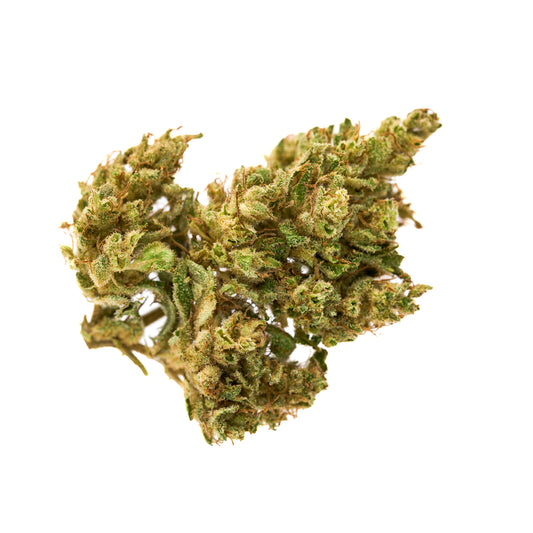
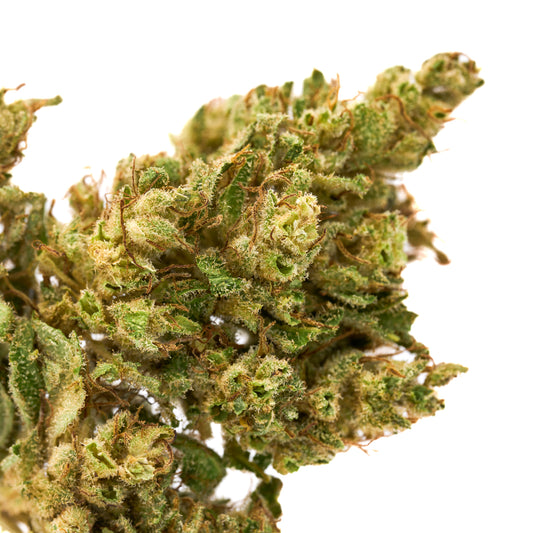

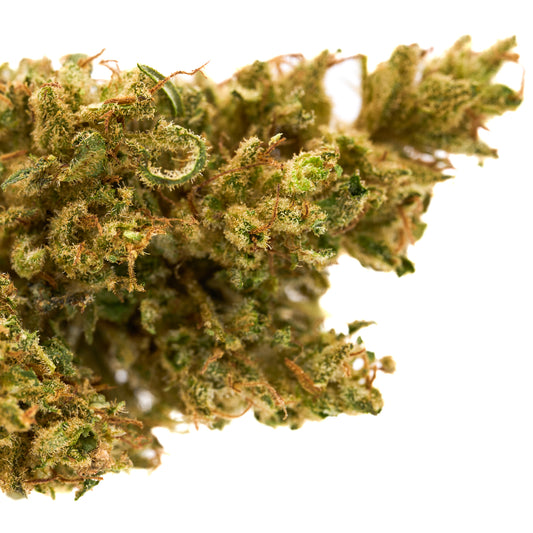

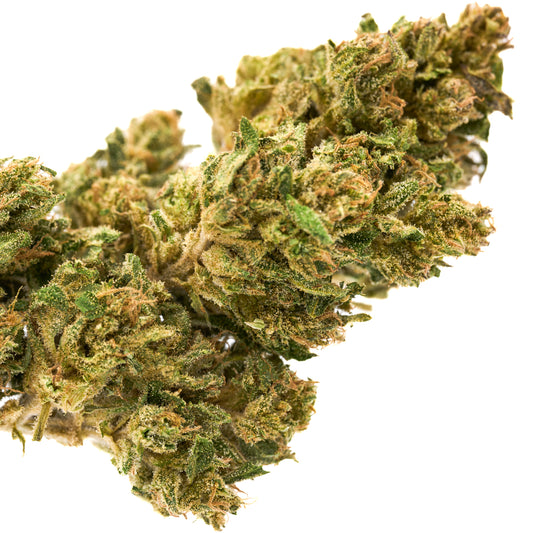





Leave a comment
Please note, comments need to be approved before they are published.